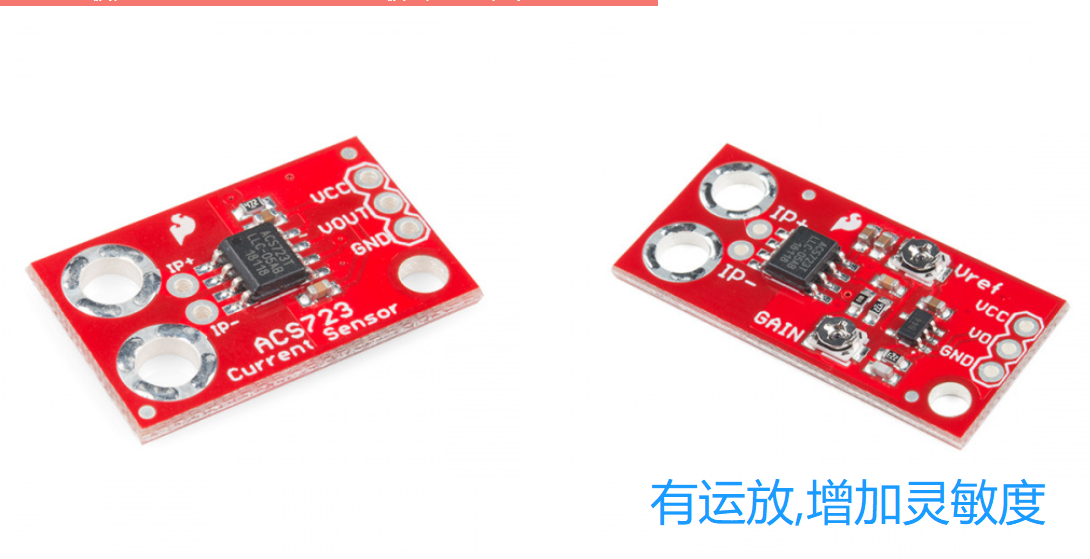ACS723 Current Sensor Usage Case - Weikewei - Professional FAE Guidance
This article is about the ACS723 acquisition board. If you are using the ACS712 acquisition board, please refer to the old ACS712 low current sensor connection guide
ACS723 is a convenient small current sensor produced by Allegro MicroSystems, which can be used for low to medium current sensing applications. The following figure shows two designs of acquisition boards, one with only sensors and the other with on-board amplifiers to increase sensitivity.

The ACS723 sensor uses a Hall effect sensor to output voltage relative to the IP+and IP pin currents. The advantage of using Hall effect sensors is that the circuit being sensed and the circuit reading the sensor are electrically isolated. This means that although your Arduino runs at 5V, the sensing circuit can operate at higher DC or AC voltages! The amplified acquisition board (low current) is capable of sensing very small currents dropping to about 10mA and large currents up to 5A! However, as the output is analog, your available readings will be limited by noise and the resolution of the ADC reading output. This type of sensor is not recommended for current sensors below 10 milliamps.
Both versions of this grouping board have the following properties: an analog output with a bandwidth adjustable to 80kHz, and the ACS723 sensor's bandwidth for breaking through the width filter has been set to 20kHz to reduce noise with high gain. The full 80KHz bandwidth of the sensor can be restored by turning off the JP1 (bandwidth selection) jumper on the back of the circuit board.Measure DC and AC currents from approximately 10mA to 5A
Complete electrical isolation of measurement and sensing circuits
The basic sensitivity of the version without operational amplifier is 400mV/A
In addition to the above, the small current sensor board also has the following functions: adjustable sensitivity and on-board amplifier, with gain ranging from 2.2 to 22 V/V22v/v
To measure current using this device, the current must flow through the IP+terminal and then out of the IP terminal (it will work in the other direction, but the measurement result is negative). IE: These terminals must be connected in series with the circuit through which the measured current passes. Please note that both IP+and two IP terminals are interconnected, and you can use one (or both) of them.
However, there are a few points to note:
With higher gain, you will see more noise (spikes) in the output, so smaller currents will be difficult to measure accurately. If you try to measure larger currents with high gain settings, your output will saturate or clip and reach a maximum of 5V or 0V. To obtain meaningful data from the current sensor, you must configure Vref and gain potentiometer correctly.